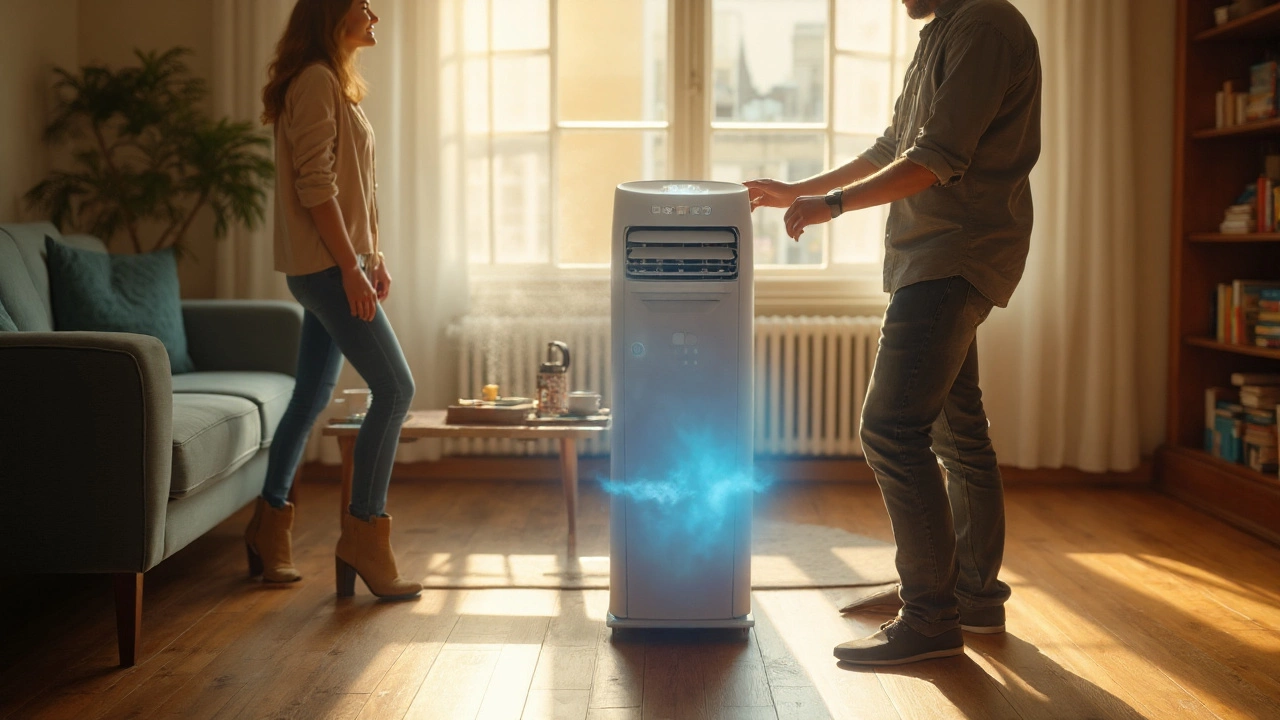Ever wondered why some air conditioners feel like a hair dryer while others barely cool a closet? The secret lies in the BTU rating. BTU stands for British Thermal Unit – the amount of heat an appliance can add or remove in an hour. In simple terms, higher BTU numbers mean more cooling power. But more isn’t always better; the right BTU matches the space you want to cool.
First, figure out the room’s square footage. Measure length and width, multiply them, and you have the area. For a typical ceiling height (about 8 feet), use this quick rule:
If the room gets a lot of sun, has many people, or houses heat‑producing appliances, add another 10 % to the total. Oversizing? You’ll waste energy, see frequent on‑off cycling, and feel less comfortable because the unit can’t de‑humidify properly.
Every BTU costs a bit of electricity. A 10,000 BTU portable AC usually draws 1,000‑1,200 W. Run it for eight hours, and you’ll see roughly 8‑10 kWh on your bill. The key to saving money is using the right size and operating it wisely: set the thermostat about 78 °F (26 °C) when you’re home, and turn it higher or off when you’re out.
Many models now feature an Energy‑Star label, which means they meet strict efficiency standards. Compare the EER (Energy Efficiency Ratio) – higher numbers indicate lower electricity use per BTU. If you see a 10,000 BTU unit with an EER of 11.5 versus another at 9.0, the former will run cheaper even though they both cool the same space.
BTU isn’t just for ACs. Heaters, dehumidifiers, and even kitchen burners use the same scale. A 30,000 BTU gas heater can warm a 1,200 sq ft living room, while a 5,000 BTU dehumidifier is best for a small bathroom.
Bottom line: start with your room size, add a buffer for sun or people, and then check the EER or SEER rating for efficiency. The right BTU keeps you cool, saves cash, and avoids the annoyances of an over‑powered unit constantly turning on and off.
Need a quick reference? Grab a tape measure, write down the square footage, and use the chart above. In a pinch, many online calculators let you plug in room dimensions, sun exposure, and occupancy to get a spot‑on BTU recommendation.
When you shop at Bargain Hub, look for the BTU rating right on the product page, compare EER scores, and don’t forget to read user reviews about real‑world performance. A properly sized unit will feel like a silent, steady breeze instead of a noisy, wasteful gadget.
Got questions about a specific model’s BTU or want help picking the right size for a tricky space? Drop a comment below or chat with our support team – we love turning BTU talk into comfortable living.

Discover the real limits of a portable air conditioner, how BTU, room size, and efficiency affect temperature drop, and tips to maximize cooling performance.